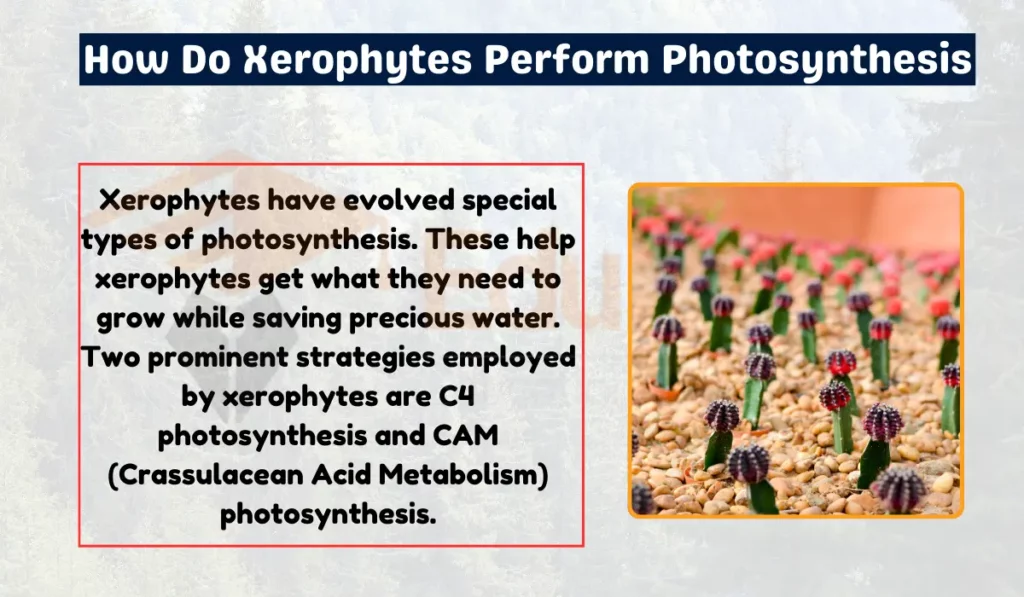How Do Xerophytes Perform Photosynthesis
Xerophytes are plants that live in extremely dry environments. They have evolved special types of photosynthesis. These help xerophytes get what they need to grow while saving precious water.
Two prominent strategies employed by xerophytes are C4 photosynthesis and CAM (Crassulacean Acid Metabolism) photosynthesis.

Methods of Photosynthesis in Xerophytes
Xerophytes use following speciliazed types of photosynthesis to produce food.
1. C4 Photosynthesis
Mechanism
Xerophytes that use C4 photosynthesis have anatomical and biochemical adaptations that minimize water loss while optimizing carbon dioxide uptake.
In C4 plants, such as certain grasses and some succulents, specialized cells called bundle sheath cells surround the leaf veins.
- These plants initially fix carbon dioxide into a four-carbon compound in mesophyll cells, which are closer to the leaf surface.
- The four-carbon compounds are then transported to bundle sheath cells, where they release carbon dioxide for the Calvin cycle, the second phase of photosynthesis. This spatial separation helps reduce photorespiration and water loss.
Advantages for Xerophytes
C4 photosynthesis allows xerophytes to keep stomata partially closed during the day, reducing water loss through transpiration.
The spatial separation of carbon fixation minimizes the impact of photorespiration, an energy-draining process that occurs when oxygen interferes with normal photosynthesis.
2. CAM Photosynthesis
Mechanism
CAM photosynthesis is particularly well-suited for xerophytes that inhabit arid regions, such as cacti, agaves, and certain bromeliads.
- CAM plants open their stomata at night to take in carbon dioxide, which is then stored as an organic acid.
- During the day, when stomata are closed to minimize water loss, the stored carbon dioxide is released for use in Calvin cycle.
Advantages for Xerophytes
By opening stomata at night, CAM plants avoid the daytime heat and dryness, reducing water loss through transpiration.
The stored carbon dioxide from the night is used during the day for photosynthesis. It allowis plant to carry out this essential process while minimizing water loss.



Leave a Reply